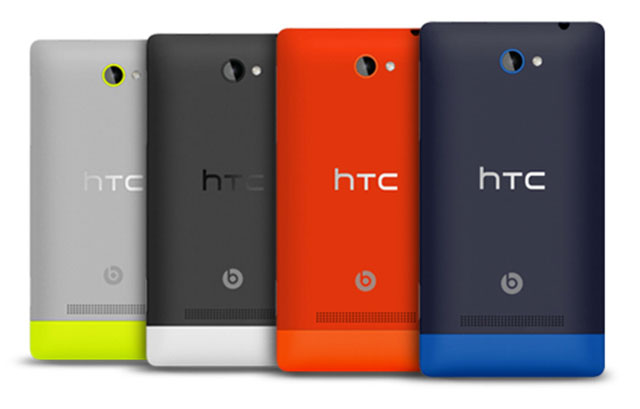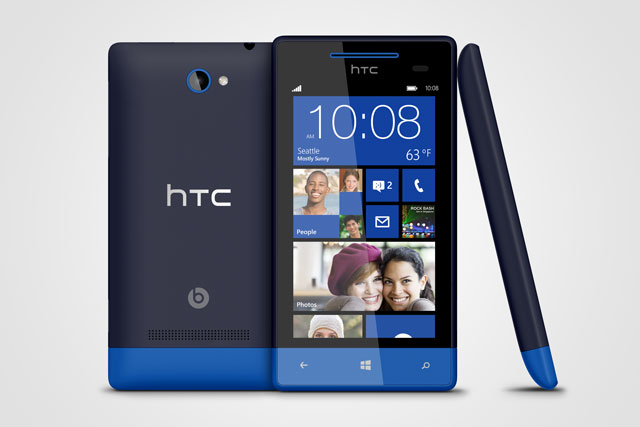
HTC’s new midrange Microsoft-powered smartphone, the Windows Phone 8-based 8S, is a remarkably good piece of gear. Costing R4 000, it’s about R3 000 cheaper than its flagship 8X and the most affordable Windows Phone 8 device we’ve reviewed to date.
Despite its modest price, the 8S is just about as speedy in operation as any other Windows Phone device we’ve used. And it feels more comfortable in the hand than most of them. In fact, we preferred the feel of the 8S to that of the more expensive and better equipped 8X. At only 113g, it’s also lightweight.
The 8S is a unibody device, although the small, coloured plastic band at the bottom of the phone pops out to reveal a slot for a micro Sim and, unlike the 8X, a microSD port – useful for expanding the fairly limited 4GB of onboard storage by up to an additional 32GB.
Like its larger sibling, the 8S has the standard Windows “back”, “home” and “search” buttons beneath its 4-inch, 480×800-pixel display. Unfortunately, like all other Windows Phone devices, the 8S’s search button takes you straight to Bing rather than allowing for contextual search. There is also no option to change the search engine to Google.
This is something Microsoft needs to fix. Bing is one of the biggest turn-offs about Windows Phone handsets. Just as Apple shot itself in the foot by removing Google Maps from iOS and insisting on its own, flawed, mapping application instead, Microsoft’s insisting we use Bing only alienates the majority of users who’d rather stick to Google.

Despite having a lower resolution display than many 4-inch displays, the 8S’s screen looks great. It is bright, has good contrast and, most importantly, is incredibly responsive to touch. It’s so good it makes the entire device feel far more high end than its price tag suggests.
The dedicated camera button on the right-hand side of the 8S launches the camera from the lock screen, or while in any application, and doubles as a shutter release. The camera may only be a 5-megapixel affair, but with a 35mm lens and f2,8 aperture it offers results on par with the camera in the iPhone 4 — a leader in its time — and it shoots 720p video at 30 frames per second.
HTC has included its own photo manipulation application called Photo Enhancer, which allows users to add filters to images in their camera roll. It’s pretty limited, and doesn’t allow for any other editing like cropping or straightening, making it more a gimmick than anything else.
Like most of HTC’s recent handsets, the 8S includes Beats audio enhancement technology. Given the expandable storage, this is a great addition and another mark in the 8S’s favour.
Really, the only thing missing from the 8S is a front-facing camera. One would think a 640×480-pixel camera wouldn’t push the price up by much. A front camera would be especially welcome given that Skype is an integral application in the Windows Phone experience.
The 1 700mAh battery is respectable given the low demands of the display, and the 1GHz dual-core processor and 512MB of RAM result in an experience not unlike to every other Windows Phone 8-powered device we’ve handled.
HTC has, once again, made an excellent device. The 8S feels like a premium smartphone, yet without the premium price tag. It’s aesthetically pleasing, feels great in the hand and offers almost all of the functionality of higher-end devices. It deserves to sell in droves. — (c) 2012 NewsCentral Media




